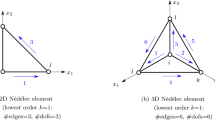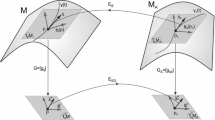Abstract
The Newtonian differential equations of motion for the two-body problem can be transformed into four, linear, harmonic oscillator equations by simultaneously applying the regularizing time transformation dt/ds=r and the Kustaanheimo-Stiefel (KS) coordinate transformation. The time transformation changes the independent variable from time to a new variables, and the KS transformation transforms the position and velocity vectors from Cartesian space into a four-dimensional space. This paper presents the derivation of uniform, regular equations for the perturbed twobody problem in the four-dimensional space. The variation of parameters technique is used to develop expressions for the derivatives of ten elements (which are constants in the unperturbed motion) for the general case that includes both perturbations which can arise from a potential and perturbations which cannot be derived from a potential. These element differential equations are slightly modified by introducing two additional elements for the time to further improve long term stability of numerical integration.
Similar content being viewed by others
References
Burdet, C. A.: 1968,Z. Angew. Math. Phys. 19, 345–368.
Stiefel, E. L. and Scheifele, G.: 1971,Linear and Regular Celestial Mechanics, Springer, Berlin.
Author information
Authors and Affiliations
Rights and permissions
About this article
Cite this article
Bond, V.R. The uniform, regular differential equations of the KS transformed perturbed two-body problem. Celestial Mechanics 10, 303–318 (1974). https://doi.org/10.1007/BF01586860
Received:
Issue Date:
DOI: https://doi.org/10.1007/BF01586860




